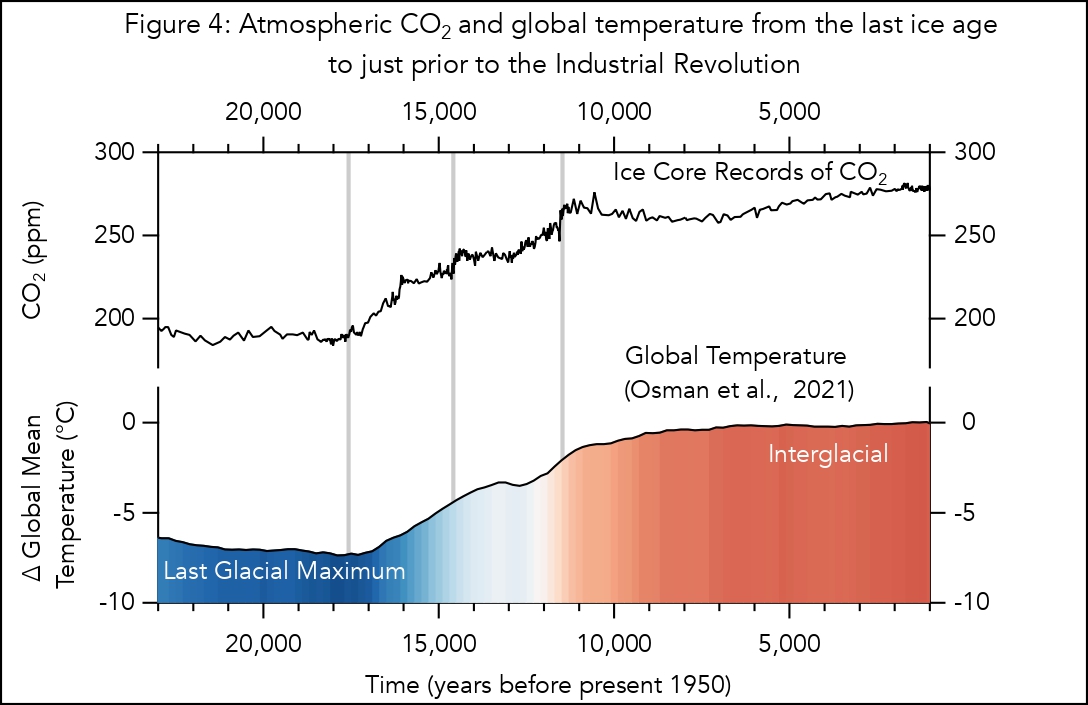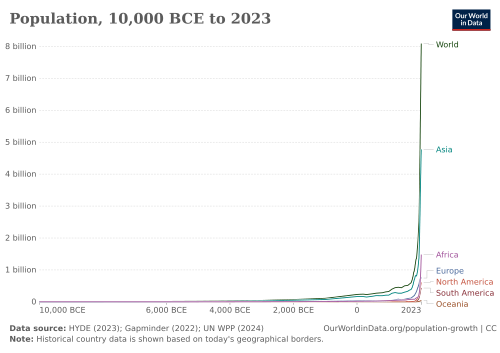Quote:
Originally Posted by redpoint5

- I have some evidence, such as the fact that human numbers were miniscule at the peak of this current ice age, and rapidly increased as things thawed.
- We have a biological mechanism to deal with excessive heat through perspiration and evaporation. We do not have a biological mechanism to contend long-term with insufficient heat, and much energy is wasted during brief periods of hypothermia. It's a tough thing to be a hairless ape in an ice age.
- Expending energy for warmth demands more calories, and obtaining more calories demands a plan to have those calories when they are most scarce; during winter weather.
- Hypothermia has and still does kill more people every year than hyperthermia.
- The bulk of the human population exists closer to the equator than the poles, suggesting a preference to warmer climates.
- Finally, the fact that humanity originated from Africa suggests our species is better suited to those environments.
The consilience of these facts strongly supports my hypothesis that humanity is biologically adapted to warmer climates compared to colder ones.
As you point out, it's technology that allows humanity to exist in all climates and have prolific numbers.
20,000 years ago during this glacial maximum, there might have been 1 million living humans


"Current era: About 10% of the land area is covered by glaciers, ice caps, and ice sheets (National Snow and Ice Data Center, 2017).
Last Ice Age (20,000-10,000 years ago): Approximately 30% of the land on Earth was covered by glaciers (WorldAtlas, 2018).
During the most active period of the last ice age (around 20,000 years ago): Around 50% of the land on Earth was covered by glaciers (Tamara Picoís study, 2023).
Historically: Permanent ice has only existed on Earth for about 20% of the planetís history, during periods of icehouse climate (Earth Science Stack Exchange, 2023)." |
1) Human numbers have fallen to as low as 70 breeding pairs, so that's factual.
2) Humans have no biological facility for dealing with 'heat-index' phenomena except death by renal failure.
3) Without shelter and fire, no amount of food will prevent death unless one remains physically active, generating metabolic heat. And at some point, that will be insufficient to ward off hypothermia.
4) Yes, hypothermia kills far more than hyperthermia, when taken in the context of ' temperature mortality ratio '.
Most who die are 65-years or older, and they have pre-existing health issues:
* respiratory infections
* cardiovascular disease
* diabetes
* kidney disease
* alcoholism/ fatty liver
OR :
* run their vehicle into a snow bank and perish from exposure.
* get caught out in a storm un-prepared.
* get 'wet', lose all insulation potential of clothing and die of exposure.
* get stuck in the mud, leave their vehicle, and die of exposure.
* the majority of 'cold' deaths occur at 'moderate' cold conditions.
5) in 2023, 2,677 Americans died of 'heat death.'
6) in 2023, about 1,500 Americans died of 'cold' death.
7) the 'bulk' of the human population, living near the Equator are going to die of heat death.
8) The 'environment' of the Holocene, in which humans flourished is 'vanishing' at a rate that is 170-times faster than humans, animals, and plants can 'evolve,' which will end up in mass extinction.
9) The existence of humans on planet Earth is an 'instant' ,compared the Earth's geologic history.
10) With respect to Earth's position in our solar system, we're already near the inner edge of the 'Goldilocks' zone of habitability. The heat blanket caused by anthropogenic greenhouse gases will become so 'potent' that, it will be tantamount to 'moving' Earth's orbit fatally close to the Sun.
A 'look' at our Moon, and Venus gives you all you need to know about how fossil -fuels will 'end' our planet. Scientifically, there is no other conclusion.